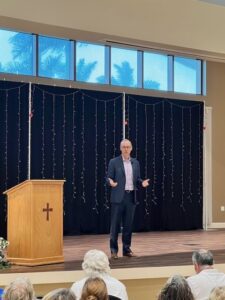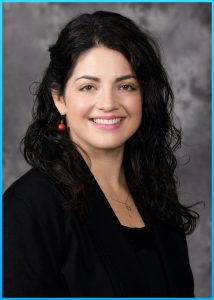Every day, Catholic Charities, Diocese of Venice, Inc., serves the most vulnerable population by feeding, housing, empowering, and encouraging all in need.
Now, you can help Catholic Charities by donating to the annual “Summertime and the Giving is Easy” campaign.

The Campaign gets back to the basics by reminding the generous faithful about key areas where Catholic Charities assists people throughout the 10-county Diocese of Venice region. Many people live without adequate food, shelter, education and support. Catholic Charities offers people in need in Southwest Florida the help that brings about real change in their lives, and provides hope for the future.
Each year Catholic Charities serves more than 100,000 individuals and families regardless of race, nationality or creed. The lingering effects of Hurricanes Ian (2022), Helene and Milton (2024) and rising costs of necessary items continue to put a strain on the resources of people throughout the region. Each day, Catholic Charities works hard to make a difference. A total of 93 cents of each dollar donated to Catholic Charities goes directly to more than 30 programs and services which ranks the charity among the most efficient in the country.
Bishop Frank J. Dewane said the support of Catholic Charities by the faithful of Southwest Florida is inspirational and crucial to ensuring “our brothers and sisters in Christ continue to receive the help and support they need. Catholic Charities does a tremendous job in providing programs that not only help in a crisis but assist in improving daily the lives of those they reach. Your support is appreciated and critical!”
Christopher Root, Chief Executive Officer of Catholic Charities, Diocese of Venice, says all donations, great or small, enable Catholic Charities to continue to help the most vulnerable in Southwest Florida.

“At Catholic Charities, we believe summer should be a season of light, renewal, and hope, but for many in our community, it brings greater hardship,” Root said. “Power bills rise with soaring temperatures, children are home from school and without access to regular meals, and families face higher food and childcare costs at a time when resources are already stretched thin.”
“We often take for granted the necessities that are basic rights,” Root said. “The annual Catholic Charities ‘Summertime and the Giving is Easy’ campaign reminds us that many people in our communities of Southwest Florida do not have the essentials required to live a healthy life. Please consider a donation for those who lack food, shelter, education and support. You can make a real difference!”
Whether your passion is education, food security for children and families, preventing homelessness, or helping the vulnerable, please consider providing your support to the “Summertime and the Giving is Easy” campaign knowing your money will reach those in need.
Sunshine & Service: Make this Summer Matter
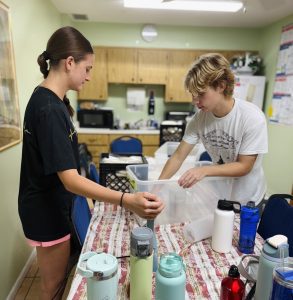
Young people assisted by Catholic Charities have a significantly increased chance of developing into resilient and capable adults. Investing in the well-being and growth of youth empowers them to overcome challenges and thrive. Each donation counts! A donation of $6,500 provides a notebook computer for 10 children; $1,000 gives a backpack full of school supplies for 10 children; $500 provides a new twin mattress, frame, and bedding for a child; $125 supplies diapers, wipes, and hygiene supplies for a mother and child for one month.
Catch the Summer Wave of Compassion
Catholic Charities strives to create a better tomorrow – a tomorrow where children and adults can experience hope, recovery, and wellness. Mental health counseling offers the tools necessary to overcome challenges. Various levels of support can make a real difference, such as $6,400 provides life-skills classes for 22 moms for one year; $2,800 allows a child mental health counseling for an entire school year; $1,700 provides a homeless mom with 12 sessions of counseling; $600 helps a survivor of human trafficking with two months of mental health counseling.
Sow the Seed of Hope All Summer Long
Homelessness is a complex problem that affects the entire community. Providing stable and permanent housing is the first critical step towards assisting individuals and families to achieve better lives. Support of $10,000 helps maintain five transitional houses for homeless families on their journey to self-sufficiency; $3,900 will house a disadvantaged family with children for two months; $1,250 houses a survivor of human trafficking for one month; $75 provides a laundry basket filled with cleaning products to a family transitioning to a new home.
Nourish Hope this Summer

Food insecurity affects 1 in 5 children in Florida, but with your support, Catholic Charities can make a difference by providing food to children, families, and seniors in the community. Join together to combat hunger and end food insecurity in our region. A donation of $5,000 provides 2,000 hot meals at the Casa Maria Soup Kitchen in Immokalee. Another $1,600 purchases a pallet of black beans, enough to feed 500 families; $50 provides 150 children weekend meals when school meals are not available; and $100 feeds a family of four for a week at food pantry locations in Immokalee, Arcadia, Clewiston, Naples, and Fort Myers.
Catholic Charities CEO Root said because of the generosity of supporters, Catholic Charities is able to provide not only meals for the hungry, but also shelter from life’s storms and hope for families in need. “As Scripture reminds us, ‘Whoever refreshes others will be refreshed’ (Proverbs 11:25). This summer, we invite you to be that refreshing presence to give, volunteer, and help us continue to bring comfort and care to those who need it most.”
The “Summertime and the Giving is Easy” campaign is a chance to brighten the future for those who come to Catholic Charities for help. Your gift, combined with others, will make a positive impact on our less fortunate brothers and sisters in Christ.
How to help
Online – https://catholiccharitiesdov.org/summertime
By mail – Catholic Charities, Diocese of Venice, Inc., “Summertime and the Giving is Easy,” 1000 Pinebrook Road, Venice, FL 34285
By phone – 941-488-5581
Service locations
Arcadia, Bonita Springs, Bradenton, Clewiston, Fort Myers, Immokalee, Naples, North Port, Port Charlotte, Sarasota, and Venice.
Programs and Services
Affordable housing; after-school programs, anti-human trafficking; case management services; clothing distribution, counseling services, disaster response and recovery, career development and empowerment, emergency shelter; farm worker housing, financial assistance, supplement assistance program (SNAP), housing for vulnerable populations, homeless prevention, housing for homeless families, immigration services; infant/toddler supplies, rapid-rehousing, residential programs for mothers and children, senior housing, senior services, soup kitchen, summer youth program, transitional housing, veterans services, and youth mentoring program.







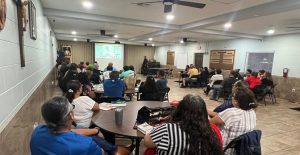
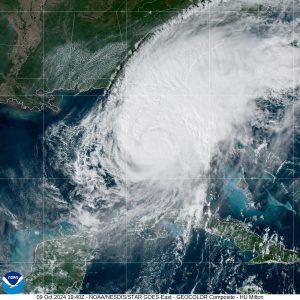
 Catholic Charities, Diocese of Venice, Inc., is still on the ground helping families recover from Helene and Milton, as well as Ian, stated Christopher M. Root, CEO of Catholic Charities, Diocese of Venice.
Catholic Charities, Diocese of Venice, Inc., is still on the ground helping families recover from Helene and Milton, as well as Ian, stated Christopher M. Root, CEO of Catholic Charities, Diocese of Venice. Experts at the National Oceanic and Atmospheric Administration (NOAA) is forecasting a range of 13-19 total named storms (winds of 39 mph or higher), slightly above the seasonal average. This follows the 2024 season which produced 18 named storms, including Hurricanes Debby (Aug. 6-7), Helene (Sept. 26), and Milton (Oct. 9), each of which brought their own misery of wind and rain. Helene, which paralleled the coast, and Milton, whose eye went over Siesta Key, both brought unprecedented storm surges to the barrier islands from Naples in the south through Palmetto to the north. NOAA stated that numerous factors were considered in the forecast, including warmer than average ocean temperatures in the Atlantic Ocean, reduced Atlantic trade winds and less wind shear, all of which tend to favor tropical storm formation, NOAA reported.
Experts at the National Oceanic and Atmospheric Administration (NOAA) is forecasting a range of 13-19 total named storms (winds of 39 mph or higher), slightly above the seasonal average. This follows the 2024 season which produced 18 named storms, including Hurricanes Debby (Aug. 6-7), Helene (Sept. 26), and Milton (Oct. 9), each of which brought their own misery of wind and rain. Helene, which paralleled the coast, and Milton, whose eye went over Siesta Key, both brought unprecedented storm surges to the barrier islands from Naples in the south through Palmetto to the north. NOAA stated that numerous factors were considered in the forecast, including warmer than average ocean temperatures in the Atlantic Ocean, reduced Atlantic trade winds and less wind shear, all of which tend to favor tropical storm formation, NOAA reported.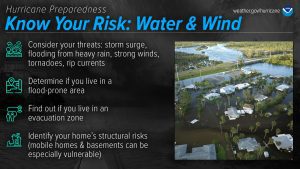
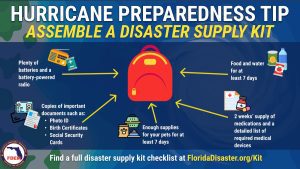







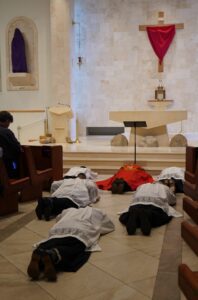
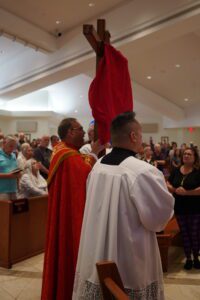
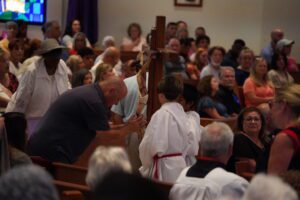



 The televised Mass for the Homebound on Palm Sunday (April 13, 2025), and Easter Sunday (April 20 and celebrated by Bishop Frank J. Dewane), will air for a full hour on both Sundays. Because of the length, the broadcast on these two Sundays will air at a special time. For viewers in the northern portions of the Diocese (DeSoto, Hardee, Highlands, Manatee, and Sarasota counties), the Masses will air at 12 p.m. on the CW Network. In the southern portions of the Diocese (Charlotte, Collier, Glades, Hendry, Lee counties), the Masses will air at 10:30 a.m. on WFTX-TV (FOX-4). Please check your cable provider for channel listings or visit www.dioceseofvenice.org/tvmass..
The televised Mass for the Homebound on Palm Sunday (April 13, 2025), and Easter Sunday (April 20 and celebrated by Bishop Frank J. Dewane), will air for a full hour on both Sundays. Because of the length, the broadcast on these two Sundays will air at a special time. For viewers in the northern portions of the Diocese (DeSoto, Hardee, Highlands, Manatee, and Sarasota counties), the Masses will air at 12 p.m. on the CW Network. In the southern portions of the Diocese (Charlotte, Collier, Glades, Hendry, Lee counties), the Masses will air at 10:30 a.m. on WFTX-TV (FOX-4). Please check your cable provider for channel listings or visit www.dioceseofvenice.org/tvmass..


 Totus Tuus is an exciting Catholic Parish Catechetical Camp for students in grades 1 – 12. The weeklong day camp held at Parishes in the Diocese of Venice is led by trained, paid missionaries. Missionary applications for the summer 2025 camp are now being accepted from anyone, age 18 or older, with an authentic, dynamic Catholic faith who is actively living the teachings of the Catholic Church. One year of college/work is preferred, but mature recent high school graduates will be considered. This is a great summer experience for anyone who wants to work in ministry, education, or with children in other settings. Visit
Totus Tuus is an exciting Catholic Parish Catechetical Camp for students in grades 1 – 12. The weeklong day camp held at Parishes in the Diocese of Venice is led by trained, paid missionaries. Missionary applications for the summer 2025 camp are now being accepted from anyone, age 18 or older, with an authentic, dynamic Catholic faith who is actively living the teachings of the Catholic Church. One year of college/work is preferred, but mature recent high school graduates will be considered. This is a great summer experience for anyone who wants to work in ministry, education, or with children in other settings. Visit 
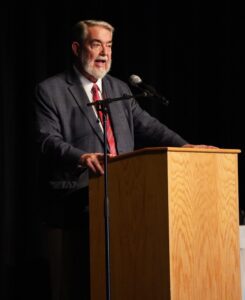


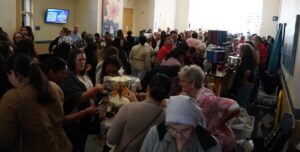

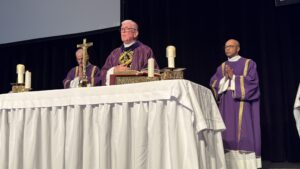




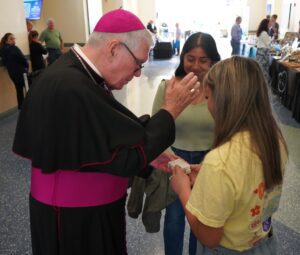

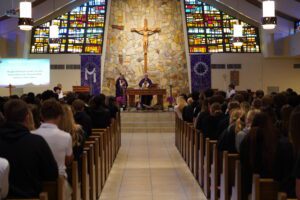




 The 40 Days for Life Spring Campaign (from Ash Wednesday to Palm Sunday, April 13, 2025) aims to end abortion locally through prayer and fasting, community outreach, and a peaceful all-day vigil in front of abortion businesses. In the Diocese of Venice, 40 Days for Life campaigns are held in three locations: Sarasota – Daily from 7 a.m. – 7 p.m., 736 Central Ave., or visit
The 40 Days for Life Spring Campaign (from Ash Wednesday to Palm Sunday, April 13, 2025) aims to end abortion locally through prayer and fasting, community outreach, and a peaceful all-day vigil in front of abortion businesses. In the Diocese of Venice, 40 Days for Life campaigns are held in three locations: Sarasota – Daily from 7 a.m. – 7 p.m., 736 Central Ave., or visit 